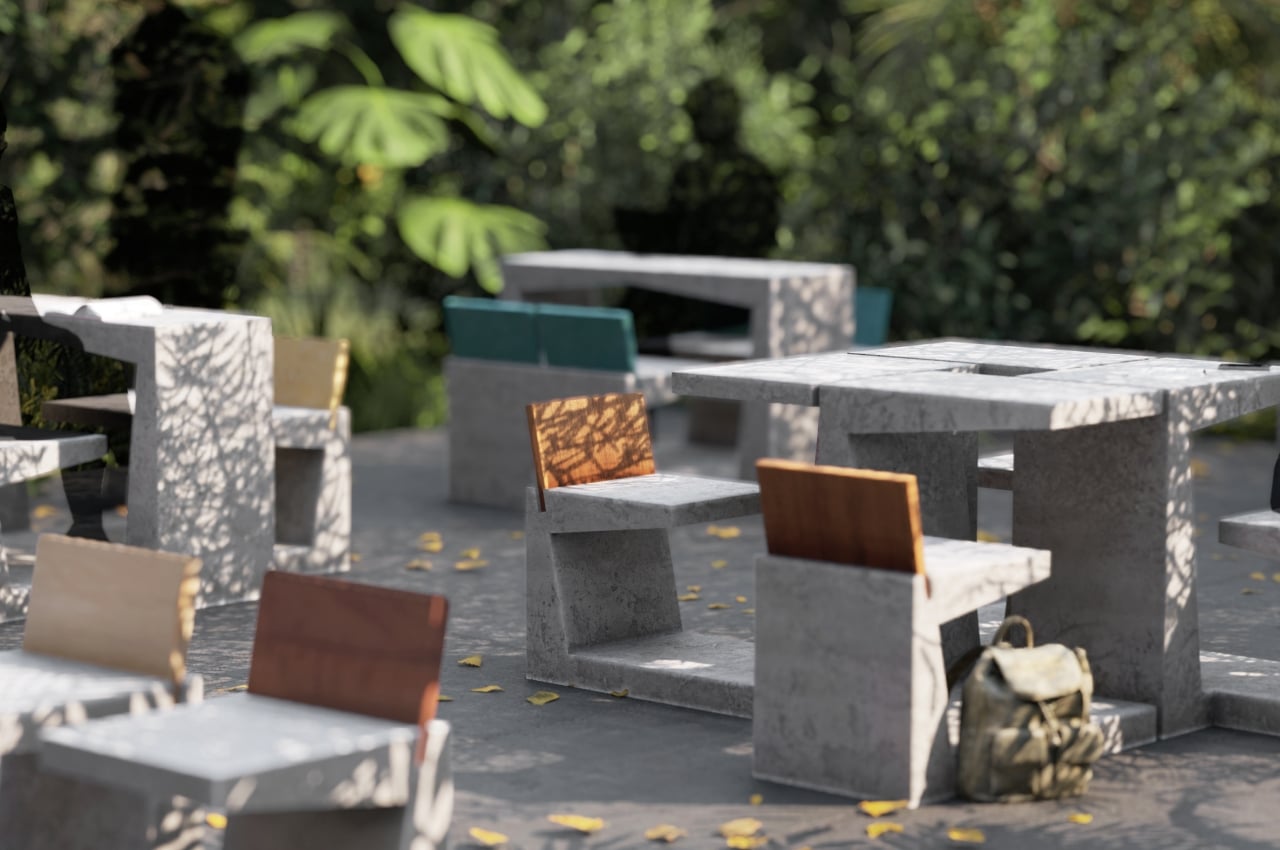
We’ve come across many designs for tables and chairs, both for those inside the comfort of homes as well as those weather outdoor environments. Given the predominant design trends, many of these leaned toward minimalist styles that had refined forms, polished finishes, and often pleasing curves. While these are often made with different materials, the majority of minimalist furniture is made from wood, even some that are meant to stand in open spaces. Of course, that’s not the only way to make interesting products that catch the eye and provide functional benefits, and these modular pieces of outdoor furniture demonstrate how you can wrap design sense and ingenuity together in a very raw yet aesthetic package made of concrete.
Designer: Ramanna Shrinivas
Minimalism is actually a very broad term that doesn’t exactly dictate the specific style or even the construction of a design. Given its frequent use in product design, especially in furniture, it has almost become synonymous with wooden products that have smooth, often polished surfaces with only one or two colorways. That said, there is also some sense of minimalism in the brutalist movement, especially in architecture. Surfaces and structures are left raw and unpainted, stripping them even of the usual polish you’d see in minimalist products. It is minimalist in a brutal sense, but it can still be beautiful, functional, and even creative.
“Brute” is a concept for furniture that puts brutalist design in a place where it works best: outdoors. The chair and the table have the same basic shape, looking more like overgrown square brackets rather than furniture. The chair is naturally shorter, and a groove on the back where a thick piece of plywood is inserted to function as a backrest. That backrest also offers a visual contrast to the chair, pitting the warmth of wood against the coldness of concrete.
The table’s shape, while similar to the chair, serves a slightly different purpose. While its default position has two of its three surfaces facing forward and are parallel to the ground, it is also possible to set it up on its “legs” for a more traditional table appearance. In this position, however, the brutally minimal set loses its most unique feature.
The brute chair and table are meant to be together, and not just because of their similar aesthetics. There are holes facing outward at the base of each piece where milled still rods can be inserted to join the two in different configurations. While a brute chair can really connect only with a single table, the brute table can accommodate different combinations. It can, for example, be flanked by two chairs, or it can be a chair and another table. Different arrangements can be used to create seating for at most four people.
The brute chair and table system might not win awards in terms of prettiness or polish, but product design isn’t just about appearances anyway. That said, the furniture still manages to look attractive in its own way while offering a kind of flexibility you won’t find in many finished pieces. Granted, it might not be the most comfortable chair to sit on or the most convenient table to use. It still manages to hold one’s attention and provide a much-needed function outdoors, which is always a mark of good design.